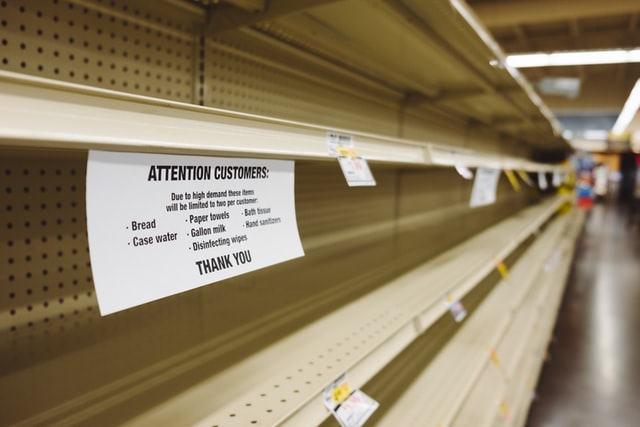How Omnichannel Ecommerce Impacts Order Fulfillment (and Vice Versa)
It wasn’t too long ago that you could operate a successful ecommerce business on Amazon, Etsy, eBay, or another third-party marketplace. Maybe your website accounted for another 20% of sales, but overall things weren’t too complicated. Then omnichannel ecommerce became a thing; not only did selling on multiple channels become a requirement of doing business, it brought with it the added complexity of fulfilling orders and tracking inventory across those channels.
In the last few years, there has been a move away from mono or multichannel selling. Customer expectations have shifted and marketing efforts have made people grow accustomed to being able to buy what they’re looking for just about everywhere: On an Instagram post, through an email newsletter, perhaps on your custom Amazon storefront. And let's not forget the incredibly high expectations when it comes to customer support - online shoppers expect service agents to know all about their order regardless of what platform they make contact on.
If your ecommerce business is going to thrive, not just survive, the bottom line is that you need to be wherever your customers are. You need to adopt an omnichannel strategy. And in order to make that work, you’ll need an omnichannel order fulfillment plan. Let’s dive right in and examine what sort of impact omnichannel has on ecommerce fulfillment and the other way around.

APIs are the antithesis to information silos, and a critical component of omnichannel ecommerce. (Photo by Beth Macdonald on Unsplash)
APIs across virtually every platform
The first requirement for omnichannel ecommerce is to connect the behind the scenes of inventory management to every channel your business has a digital presence on. To do this, you’ll need the help of APIs to siphon critical data like real-time sales from multiple platforms, inventory levels, order processing, shipping status, and more into one centralized source of truth.
APIs do a lot of heavy lifting for omnichannel ecommerce:
- They can create personalized offers for customers based on which platform they interact with your business. If a customer buys from you on Pinterest, retargeting ads should look different for them versus someone who clicked on an offer in your email newsletter.
- If you operate or outsource to a fulfillment network with multiple warehouses, APIs can route orders to be handled by the warehouse in closest proximity to your customer to save money on shipping -- a common logistics practice known as zone skipping.
Almost every major ecommerce platform has APIs available for use. Any competent ecommerce fulfillment provider should have APIs ready to integrate regardless of what warehouse or inventory management systems they are using. If you are shopping around for a new ecommerce fulfillment partner, one of the first questions you should ask is if they have APIs built out for Magento, Shopify, or whatever ecommerce platform you use.
Once you’ve integrated the backend operations of your store to every channel you sell on -- Amazon, your website, plus any niche marketplaces like Etsy -- you can take the next step and begin omnichannel order processing.

Processing ecommerce orders is complicated enough; doing it for omnichannel might require upgrading your software or even your operational capabilities.
Order processing
Managing omnichannel order fulfillment can cause headaches for a number of reasons. If you have to fulfill orders across multiple platforms, the potential for errors increases (more on that in the sections below). Coupled with the high expectations customers have for same-day order processing and two day shipping that’s also free, the stakes are high for you to process orders right the first time.
Upgrading to an omnichannel ecommerce experience requires that you adapt your fulfillment strategy to be as nimble as the sales and marketing side of your operation. Ideally you pick a fulfillment partner that can keep up with surges in demand, especially during peak times like the holidays. Those moments don’t usually happen too often, but when they do, it’s possible for orders to flood in from multiple websites all at the same time. Adapting your order fulfillment to omnichannel means adding on the capacity necessary for dealing with those critical spikes in sales.
The alternatives to omnichannel ecommerce is to have multi or mono channel ecommerce. processing and fulfillment. In practice, this means keeping your inventory and order system siloed, and usually leads to inefficiencies related to stock levels. For smaller sellers, it’s certainly possible to run an ecommerce business without omnichannel software, but the higher the volume and higher the number of SKUs, the higher the risk of error.

Selling subscription boxes on one site and single SKUs on another is one of the ways in which omnichannel order fulfillment can get a bit complicated. (Photo by BATCH by Wisconsin Hemp Scientific on Unsplash)
Kitting and subscriptions
Your most popular items may vary depending on the channel. For example, you might offer a makeup subscription box through Patreon, where the subscription model is very common. But on Amazon you might have a bestelling mascara brush that’s one piece out of the subscription boxes you sell.
Part of a solid omnichannel ecommerce strategy involves tracking the demand for popular items across multiple channels and preparing SKUs with regard to customer preference for kits, cases, or buying single products.
Kitting and product assembly are labor-intensive actions that can dig into your margins, so you’ll want to spend the minimum amount of time necessary to build an adequate amount of kits. An added layer of complexity that comes from adopting an omnichannel approach is the possibility of having to break down kits if there is more demand for a single product sold within the kit. When this happens, the change in inventory count must be recorded across every platform. With the proper APIs, you need not worry about the potential for product subtractions and additions to mess up your inventory levels.
If your business model straddles both kits and individual items for sale across different channels, it’s worth looking into which of the major shipping carriers to use. Generally, USPS tends to offer more affordable rates for smaller items, while UPS and FedEx give sellers more value for heavier packages. The omnichannel software you use may calculate the most affordable shipper per order, but if it doesn’t, it’s worth looking into specialized inventory management systems (or your 3PL partner) that can do this for you. At scale, a dollar saved per package shipped can really start to add up!

You never want to run out of stock, and when you sell on multiple channels, inventory control is a must. (Photo by Wesley Tingey on Unsplash)
Stockouts and backorders
Backorders and out of stock notices are the double-edged sword of ecommerce inventory management. On the one hand, selling out all of your product inventory and taking items on backorder is a type of PR strategy employed by major consumer brands like Nike and Sony when they release products like the latest Air Jordan or the PS5. Standing in line is a badge of honor of sorts for loyal customers, and part of the buying experience. It also means you minimize inventory holding costs, because sold-out inventory costs $0 to store as opposed to inventory sitting on shelves in your warehouse.
On the other hand, not everyone wants to wait in line, and some people leave. When this happens, you risk losing customers who will choose to buy a product from a competitor. What does any of this have to do with omnichannel order fulfillment? The advantage of omnichannel is that because it seamlessly integrates sales and order data across every platform you sell on, it can help you strategically refill inventory before running out.
Let’s use an example to illustrate why omnichannel software is critical for preventing backorders. Say you run an artisan coffee business without the use of omnichannel software. You have a particular French blend that’s very popular, and it’s listed for sale on your Shopify website, on Amazon, and on Walmart. The day starts with 6 bags of this French blend sitting in your warehouse, ready to be bought. Someone orders three bags on Amazon. Someone else orders three through Walmart. That’s all 6 bags of coffee claimed, and you’re now sold out.
If you were using omnichannel software, the APIs would read the live inventory and the product listing on Amazon, Walmart, and Shopify would automatically change to “sold out.” But in this hypothetical, you’re not using omnichannel, so the listing still shows 6 bags available because you haven’t fulfilled the orders yet. It’s still possible at this point for a shopper to purchase more of that exact product from your website, because without omnichannel software your website is cut off from activities happening on other marketplaces.
For any ecommerce business that is expanding to selling on more than one platform, this is one of the most important reasons for omnichannel adoption: it’s the only way to guarantee you don’t accidentally fall into a backorder situation and make some very unhappy customers along the way.

Omnichannel ecommerce, when paired with an effective order fulfillment strategy, can help your business bloom (Photo by Suzanne D. Williams on Unsplash)
More customers and higher CLV
The impact of omnichannel ecommerce on your business is that ultimately, it should lead to higher Customer Lifetime Value (CLV). As you position your brand to be where your customers are and adapt all aspects of your fulfillment operation to keep up with their expectations, you should see more conversions. And because the customer experience is more cyclical than ever, your presence in the channels that they use should lead to higher post-purchase engagement, and more growth in the future.
There will certainly be bumps in the road as you tie together multiple channels to the same fulfillment backend, but once you smooth those bumps out your ecommerce business should be in position to scale like never before.
 Jake Rheude
Jake Rheude